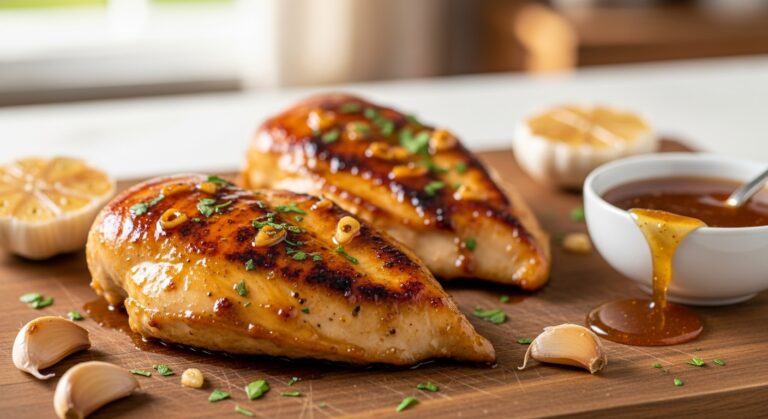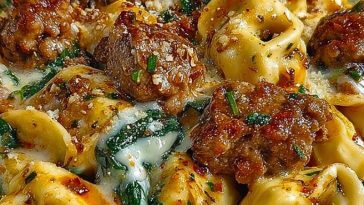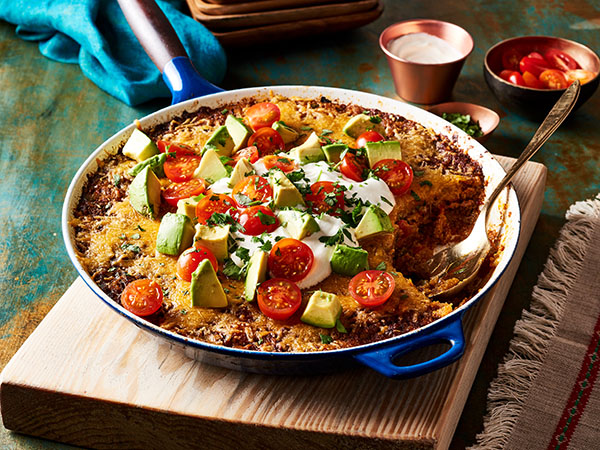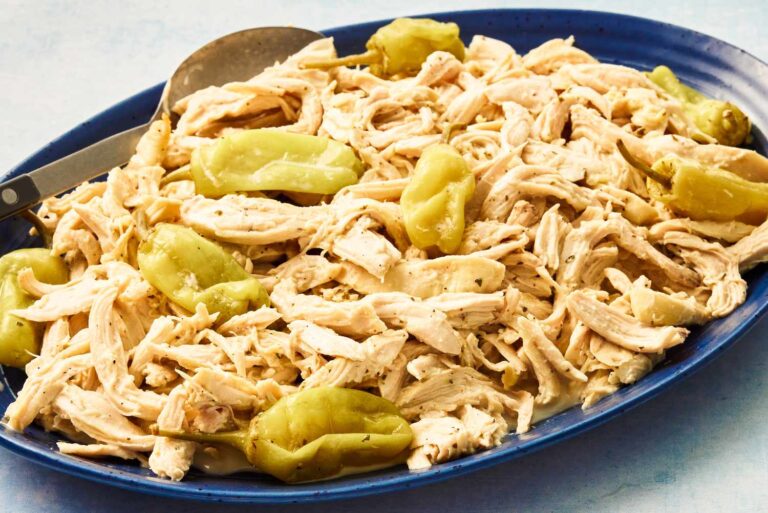Kung Pao Chicken: Authentic Chinese Recipe Made at Home
Spicy, tangy, and bursting with authentic Chinese flavors, Kung Pao Chicken is the ultimate takeout-style dish with a homemade twist. This vibrant stir-fry features tender chicken pieces coated in a bold sauce made with soy sauce, rice vinegar, and Sichuan peppercorns, all tossed with crunchy peanuts and colorful vegetables. It’s the kind of dinner that fills the whole house with mouthwatering aromas and draws everyone straight to the table.
Each bite delivers an exciting combination of textures—crispy, tender, and perfectly balanced with sweet, sour, and spicy notes. Whether you’re cooking for a busy weeknight or impressing dinner guests, this stir-fry is as quick to make as it is to devour. Add your favorite toppings like extra peanuts, sesame seeds, sliced scallions, or dried chilies for a colorful, customizable meal that feels like an authentic Chinese restaurant experience.
Why You’ll Love This Kung Pao Chicken
- Better than takeout: Restaurant-quality flavors made fresh at home—healthier, tastier, and more affordable.
- Quick weeknight winner: From start to finish in under 30 minutes, perfect for busy schedules.
- Bold flavor explosion: The perfect balance of sweet, spicy, tangy, and savory in every bite.
- Customizable heat level: Control the spice by adjusting dried chilies and chili paste to your preference.
- Protein-packed meal: Loaded with chicken and peanuts for a satisfying, energy-boosting dinner.
Preparation Phase & Tools to Use (Essential Tools and Equipment, Plus Why They Matter)
Before diving into this delicious Kung Pao Chicken, having the right tools on hand will make everything smoother—from prep to clean-up.
Essential Tools & Why You Need Them:
Large Wok or Skillet (12–14 inch)
This is the MVP of the recipe. A wok’s high heat distribution creates that authentic restaurant-style sear and allows ingredients to cook quickly without steaming.
Mixing Bowls (2–3 sizes)
Use one for marinating the chicken, another for mixing the sauce, and one more for prepping vegetables.
Sharp Chef’s Knife
Essential for cutting chicken into uniform pieces and dicing vegetables quickly and safely.
Measuring Cups & Spoons
Precision matters—especially for the sauce ingredients to achieve that perfect flavor balance.
Wooden Spoon or Wok Spatula
Ideal for tossing ingredients quickly over high heat without scratching your cookware.
Cutting Board
For chopping chicken, vegetables, garlic, ginger, and scallions efficiently.
Having these items prepped and within reach makes the cooking process seamless and safe.

Preparation Tips
- Prep all ingredients before cooking (mise en place). Stir-frying happens fast, so having everything ready prevents burning or overcooking.
- Cut chicken into uniform bite-sized pieces to ensure even cooking. Partially frozen chicken is easier to slice thinly.
- Use high heat throughout cooking—this creates that signature “wok hei” (breath of the wok) flavor that makes restaurant stir-fries so special.
- Don’t overcrowd the wok—cook chicken in batches if necessary. Overcrowding causes steaming instead of searing.
- Toast the peanuts lightly before adding to enhance their flavor and crunch.
- Have your sauce mixed and ready—once cooking starts, there’s no time to measure ingredients.
These small touches make a big difference in taste, texture, and presentation.
Ingredients for This Kung Pao Chicken
Here’s everything you’ll need to bring this bold, flavor-packed stir-fry to life. Most of the ingredients are Asian pantry staples, making it both authentic and easy to prepare.
For the Chicken & Marinade:
- 1½ lbs boneless, skinless chicken breasts or thighs, cut into ¾-inch cubes
- 1 tablespoon soy sauce
- 1 tablespoon Shaoxing wine (or dry sherry)
- 1 teaspoon cornstarch
- Pinch of white pepper
For the Kung Pao Sauce:
- 3 tablespoons soy sauce
- 2 tablespoons Chinese black vinegar (or rice vinegar)
- 2 tablespoons hoisin sauce
- 1 tablespoon sugar
- 1 tablespoon cornstarch
- 2 teaspoons sesame oil
- ¼ cup chicken broth or water
For the Stir-Fry:
- ½ cup roasted unsalted peanuts
- 8–10 dried red chilies (adjust for heat preference)
- 1 teaspoon Sichuan peppercorns (optional but recommended)
- 1 red bell pepper, cut into 1-inch pieces
- 1 green bell pepper, cut into 1-inch pieces
- 4 cloves garlic, minced
- 1-inch piece fresh ginger, minced
- 4 scallions, white and green parts separated, cut into 1-inch pieces
- 3 tablespoons vegetable oil (for cooking)
Optional Toppings:
- Extra roasted peanuts
- Sesame seeds
- Sliced scallions
- Additional dried chilies
- Fresh cilantro
- Chili oil drizzle
Everything in this list balances texture and flavor—the crispy peanuts and tender chicken contrast beautifully with the bold, complex sauce. The toppings are optional but give the dish an authentic, restaurant-quality finish.
Step 1: Marinate the Chicken
In a mixing bowl, combine the cubed chicken with 1 tablespoon soy sauce, Shaoxing wine, 1 teaspoon cornstarch, and white pepper. Mix well and let marinate for 15–20 minutes at room temperature while you prepare the other ingredients.
Step 2: Prepare the Kung Pao Sauce
In a small bowl, whisk together 3 tablespoons soy sauce, black vinegar, hoisin sauce, sugar, 1 tablespoon cornstarch, sesame oil, and chicken broth until smooth and well combined. Set aside within easy reach of your cooking station.
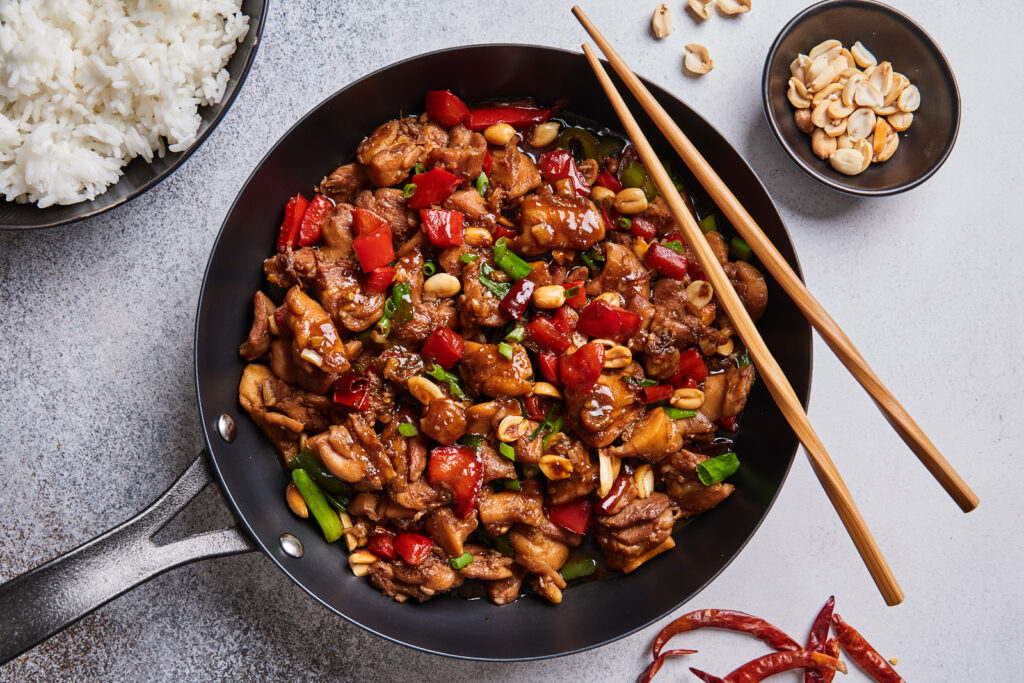
Step 3: Stir-Fry the Chicken
Heat 2 tablespoons of vegetable oil in a large wok or skillet over high heat until shimmering. Add the marinated chicken in a single layer and let it sear undisturbed for 1–2 minutes. Toss and continue cooking for another 2–3 minutes until the chicken is golden and cooked through. Remove the chicken from the wok and set aside.
Step 4: Cook the Aromatics and Vegetables
Add the remaining 1 tablespoon of oil to the wok. Toss in the dried chilies and Sichuan peppercorns, stirring quickly for 15–20 seconds until fragrant (be careful not to burn them). Add the minced garlic, ginger, and white parts of the scallions. Stir-fry for 30 seconds until aromatic. Add the bell peppers and stir-fry for 2–3 minutes until slightly softened but still crisp.
Step 5: Combine and Finish
Return the cooked chicken to the wok along with the peanuts and green parts of the scallions. Give the sauce a quick stir and pour it into the wok. Toss everything together rapidly for 1–2 minutes until the sauce thickens and coats all the ingredients evenly. The sauce should be glossy and cling to the chicken and vegetables.
Step 6: Serve
Transfer to a serving platter immediately. Garnish with extra peanuts, sesame seeds, or sliced scallions as desired. Serve hot over steamed white rice or fried rice.
Notes
Heat Level Adjustment: For a milder version, remove the seeds from the dried chilies or use fewer chilies. For extra heat, add 1–2 teaspoons of chili paste or Sichuan chili oil.
Protein Swaps: Shrimp, tofu, or cashews work beautifully in place of chicken. Adjust cooking times accordingly for different proteins.
Vegetable Variations: Zucchini, water chestnuts, bamboo shoots, or snap peas make excellent additions or substitutions.
Watch Out for These Mistakes While Cooking
- Not having everything prepped first: Stir-frying is fast and furious. If you’re chopping vegetables while cooking, ingredients will burn or overcook.
- Using low heat: High heat is essential for authentic stir-fry flavor and texture. Low heat causes ingredients to steam and become soggy.
- Overcrowding the wok: Too much chicken at once lowers the temperature and causes steaming instead of searing. Cook in batches if needed.
- Adding sauce too early: The sauce should go in at the end to coat everything without making it mushy. Add it last and toss quickly.
- Burning the dried chilies: They toast in seconds over high heat. Watch them carefully and stir constantly to prevent bitter, burnt flavors.
- Overcooking the vegetables: Bell peppers should remain crisp-tender, not soft and mushy. They need just 2–3 minutes of cooking.
- Not whisking the sauce before adding: Cornstarch settles at the bottom. Always give it a quick stir right before pouring.
- Skipping the marinade: Even 15 minutes makes a difference in tenderness and flavor. Don’t skip this step.
What to Serve With Kung Pao Chicken?
This bold and spicy stir-fry is a meal on its own, but pairing it with the right sides can elevate it into a complete Chinese feast. Whether you’re going light or indulgent, there’s a side dish for every vibe.
8 Delicious Recommendations:
Steamed White Rice
The classic pairing—fluffy jasmine or basmati rice perfectly absorbs the spicy, savory sauce.
Egg Fried Rice
A flavorful upgrade with scrambled eggs, peas, and carrots that complements the bold main dish.
Vegetable Spring Rolls
Crispy, golden rolls with sweet chili dipping sauce add a delightful textural contrast.
Chinese Hot and Sour Soup
Tangy, spicy, and warming—this soup makes a perfect starter or side.
Garlic Green Beans
Stir-fried green beans with garlic and soy sauce provide a simple, fresh vegetable side.
Scallion Pancakes
Crispy, flaky, and savory—perfect for scooping up extra sauce or enjoying on the side.
Cucumber Salad
Cool, refreshing cucumber slices with rice vinegar and sesame oil balance the heat beautifully.
Mango Pudding or Almond Cookies (for dessert)
A light, sweet finish that cleanses the palate after the spicy main course.
These pairings help round out the meal and bring a restaurant-level feel to your dinner table.
Storage Instructions
Kung Pao Chicken is just as satisfying the next day—and it stores beautifully.
How to Store:
Refrigerator: Let the stir-fry cool completely, then cover tightly with foil or transfer to an airtight container. It will keep in the fridge for up to 3 days.
Freezer: For longer storage, wrap the cooled stir-fry tightly in plastic wrap and then foil, or place individual portions in freezer-safe containers. Freeze for up to 2 months.
Reheating:
Stovetop: Reheat in a wok or skillet over medium-high heat for 3–5 minutes, stirring frequently. Add a splash of water or broth if needed.
Microwave: Heat individual portions on high power for 2–3 minutes, stirring halfway through. The sauce may thicken, so add a teaspoon of water if necessary.
Always ensure internal temperature reaches 165°F (74°C) when reheating.
Estimated Nutrition (Per Serving – Based on 6 Servings)
Please note this is an approximate breakdown and may vary based on exact ingredients used.
| Nutrient | Amount Per Serving |
|---|---|
| Calories | 340 |
| Protein | 28g |
| Carbohydrates | 18g |
| Dietary Fiber | 3g |
| Sugar | 8g |
| Total Fat | 18g |
| Saturated Fat | 3g |
| Unsaturated Fat | 14g |
| Trans Fat | 0g |
| Cholesterol | 75mg |
| Sodium | 820mg |
This dish delivers a filling balance of protein, carbs, and fats—great for a hearty lunch or dinner with energy to spare.
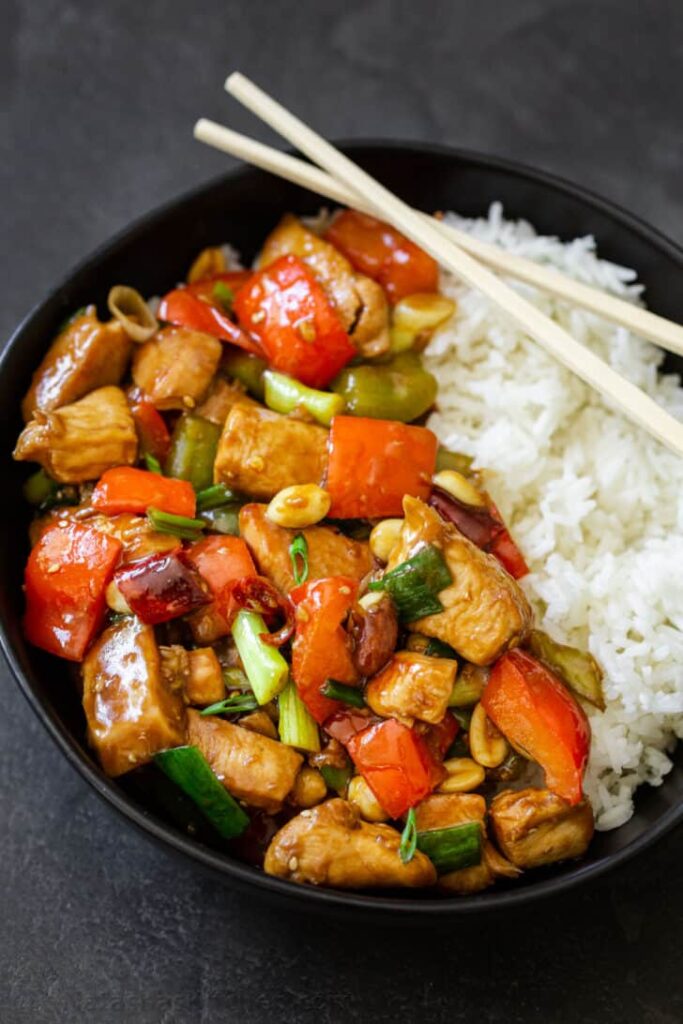
Frequently Asked Questions
1. Can I make Kung Pao Chicken ahead of time?
You can prep all ingredients and marinate the chicken up to 24 hours in advance. However, stir-frying is best done fresh for optimal texture and flavor.
2. Can I use a different protein besides chicken?
Yes! Shrimp, beef, pork, tofu, or even a mix of vegetables work wonderfully. Just adjust cooking times based on your protein choice.
3. Is this Kung Pao Chicken very spicy?
The base recipe has a medium spice level. You can adjust the heat by using fewer dried chilies or removing their seeds for a milder version.
4. Can I make Kung Pao Chicken without Sichuan peppercorns?
Definitely. While Sichuan peppercorns add authentic numbing spice, the dish is still delicious without them. The dried chilies provide plenty of heat.
5. What if I don’t have a wok?
No problem. A large, heavy-bottomed skillet works well. Just make sure it’s big enough to toss ingredients without overcrowding.
6. Can I double this Kung Pao Chicken recipe for a larger group?
Yes! Double all ingredients but cook the chicken in multiple batches to maintain high heat. A single wok can’t handle double portions at once.
7. Can I use cashews instead of peanuts?
Of course. Cashews are a popular variation and work beautifully. Toast them lightly before adding for the best flavor.
8. How do I keep the sauce from becoming too thick?
If the sauce thickens too much, simply add a tablespoon or two of chicken broth or water while reheating and toss well.
Conclusion
Kung Pao Chicken is the ultimate fusion of bold spice and savory-sweet flavor—all stir-fried into one quick, satisfying dish. With its tender chicken, crunchy peanuts, and glossy sauce, it’s everything you love about Chinese takeout, made better at home.
Perfect for family dinners, meal prep, or impressive entertaining, this stir-fry is as flexible as it is flavorful. Plus, with endless customization options, it never gets boring. So grab your wok and make dinner something everyone looks forward to.

